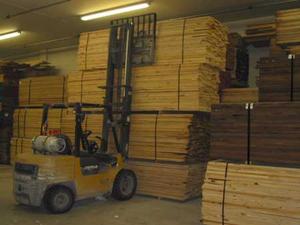DisastersJapan's disaster recovery expected to boost U.S. exports
America’s western sea ports and industries like timber and oil are expected to see an increase in activity as Japan’s reconstruction efforts swing into full gear; the natural disaster leveled large portions of Japan and to rebuild the country will need to import record amounts of logs, timber, and plywood

Japan's rebuilding will mean increased lumber shipments // Source: cdc.gov
America’s western sea ports and industries like timber and oil are expected to see an increase in activity as Japan’s reconstruction efforts swing into full gear.
Ports in Washington as well as Vancouver, Canada are expected to load more timber onto vessels bound for Japan as it recovers from the $220 billion in damages that the 11 March 9.0 magnitude earthquake and tsunami caused.
According to Wood Resources International LLC., a forest-industry consulting firm, the natural disaster leveled large portions of Japan and to rebuild the country will need to import record amounts of logs, timber, and plywood.
In particular U.S. timber companies like Weyerhaeuser Co. and Rayonier Inc. are expected to see an increase in orders from Japan, a welcome trend as the U.S. housing market has continued to flounder under the weight of the recession.
“Demand will start to pick up in the second half and it will probably last for a year or two,” said Hakan Ekstrom, the president of Wood Resources International. “Weyerhaeuser, since they are a huge company and they have long, long relations with Japanese companies, will benefit.”
Weyerhaeuser is expected to benefit the most from Japanese orders compared to other U.S. logging companies as it exports Douglas fir, the type of timber used by Japanese homebuilders.
Japan “will shift now to longer-term production of permanent housing and that should benefit West Coast markets for lumber,” said Daniel Fulton, the president and CEO of Weyerhaeuser. “Our large, long-term export market has been and will continue to be Japan.”
Greg Lewis, an analyst with Credit Suisse, echoed Ekstrom’s sentiments, stating that Japan’s recovery is “going to benefit the dry-bulk trade in the form of timber.”
He added that rebuilding efforts is also likely to boost demand for tankers that transport oil and container ships that move finished products.
Ports in Seattle, Tacoma, and Olympia are among Washington’s ports expected to load more timber for ships headed to Japan once the country finishes clearing the debris allowing for infrastructure and housing construction to begin.
The cleanup effort is taking a bit longer than expected, and most current construction is aimed at building emergency housing. Regular home construction is not expected to begin until the end of this year at the earliest.
In a press conference Yoshihiko Noda, Japan’s finance minister, said that the country intends to complete reconstruction within ten years with most of the rebuilding finished in the first five years. To assist recovery efforts, the government plans to spend $246 billion.
So far Washington’s ports have already noticed an increase in container traffic as well as lumber headed to Japan.
In the first five months of the year, the Port of Seattle saw a 31 percent increase in exports to Japan compared to the same period last year, according to Emma Griffith, a director at Fitch Ratings who specializes in U.S. seaports. Wood exports are also up 16 percent and paper and paperboard are up 25 percent.
Meanwhile the Port of Tacoma saw an increase in 15 percent in exports to Japan for the first five months of the year compared to last year. Japan is Tacoma’s second largest trading partner.
